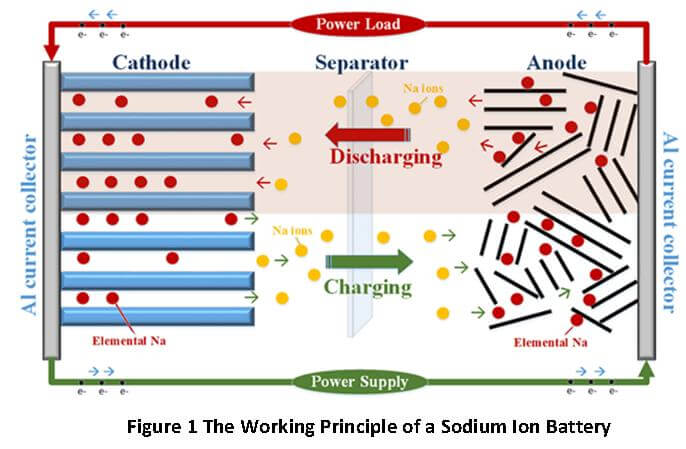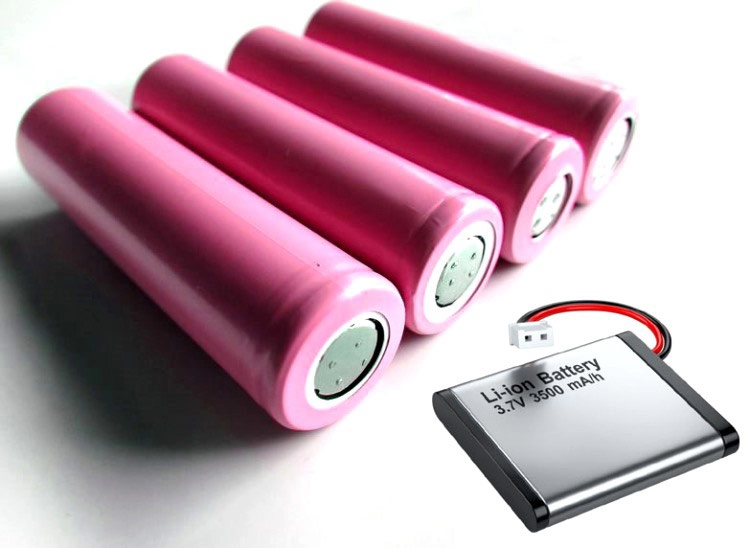Lithium-ion batteries are widely popular due to their reliability and high performance. They are now commonly used in various electronic devices and electric vehicles. Understanding the working principles of lithium-ion batteries is crucial. In this article, we will introduce the components, working principles, and various applications of lithium-ion batteries, and provide an in-depth explanation of how they work, helping readers to fully understand them.
Part 1: What is a Lithium-Ion Battery?
A lithium-ion battery is a rechargeable energy storage device that uses lithium ions to store and release energy. Unlike other batteries that rely on chemical reactions for charging, lithium-ion batteries work by reversing the flow of ions. This contributes to the efficient charging of lithium-ion batteries.
The battery consists of two electrodes: a positive electrode (anode) and a negative electrode (cathode), which are separated by an electrolyte. When the battery is connected to an external power source, ions flow from the negative electrode to the positive electrode, which is the charging process. When the battery discharges, the ion flow reverses, flowing from the positive electrode back to the negative electrode.
Part 2: How Do Lithium-Ion Batteries Work?
Let’s explore in detail how lithium-ion batteries work, starting with their components.
Components of Lithium-Ion Batteries
The main components of lithium-ion batteries include:
- Negative Electrode (Cathode): Typically made of graphite, the negative electrode provides high conductivity. During discharge, electrons leave the negative electrode and flow *through an external circuit* to the positive electrode, which has a higher potential.
- Positive Electrode (Anode): Typically made of lithium metal oxides (such as lithium cobalt oxide (LiCoO2) or lithium iron phosphate (LiFePO4)), the positive electrode receives electrons flowing from the negative electrode.
- Electrolyte and Separator: The electrolyte contains lithium salts dissolved in an organic solvent, facilitating the movement of ions between the negative and positive electrodes. The separator prevents the electrodes from contacting each other, preventing short circuits.
Part 3: Lithium-Ion Battery Discharge Process
When a lithium-ion battery discharges, a chemical reaction occurs:
Reaction at the Negative Electrode:
The chemical reaction at the negative electrode is as follows:
Lithium Titanate (Li4Ti5O12) Applications
Price Range: $300 – $400
Applications: High-power vehicles (electric buses, grid stabilization), renewable energy storage
Part 6: Key Factors Affecting the Performance of Lithium-Ion Batteries
After exploring how lithium-ion batteries work, let’s discuss several factors that can affect their performance and lifespan.
1. Temperature
Lithium-ion batteries are temperature-sensitive and perform best within a specific temperature range. Extreme temperatures can significantly impact battery performance. High temperatures can reduce capacity and shorten overall lifespan, while low temperatures can hinder the battery’s ability to function effectively.
2. Depth of Discharge (DOD)
Depth of discharge refers to the extent to which a battery is discharged. This factor affects the battery’s lifespan. Shallow discharges, using only a small portion of the battery’s capacity, can extend its lifespan.
3. Charging Rate
The charging rate can also affect battery lifespan. Fast charging can generate heat, which can damage the battery over time. Therefore, slower charging rates are more beneficial for the long-term health of lithium-ion batteries and help maintain performance.
4. Overcharging and Over-Discharging
Overcharging or over-discharging lithium-ion batteries should be avoided. Doing so can lead to permanent damage and reduced capacity. Proper battery management systems can help prevent these issues, ensuring efficient and safe battery operation.
5. Charge Cycles
The number of charge and discharge cycles affects battery performance. Batteries charged within the recommended depth of discharge range tend to have a longer lifespan. Regular charging within these limits helps maintain battery health and enhances its operating condition over time.
Part 7: Advantages and Limitations of Lithium-Ion Batteries
Lithium-ion batteries have many advantages, but they also have some limitations. Below, we will explore the benefits and challenges of using these batteries.
Advantages of Lithium-Ion Batteries
- High Energy Density: Lithium-ion batteries are known for their high energy density, providing more energy compared to many other battery types. They are compact, lightweight, and offer a higher power output per unit of weight and size.
- Long Cycle Life: These batteries can often last for hundreds to thousands of charge and discharge cycles, making them more durable compared to other alternatives, even with some capacity loss.
- Low Self-Discharge Rate: Lithium-ion batteries have a very low self-discharge rate, which allows them to store energy for extended periods. This characteristic makes them ideal for applications requiring long-term energy storage.
Limitations of Lithium-Ion Batteries
- Safety Concerns: Lithium-ion batteries pose safety risks, especially in cases of overcharging. They are susceptible to short circuits and can catch fire or explode if exposed to high temperatures.
- High Cost: Due to the advanced technology and complex materials involved in manufacturing lithium-ion batteries, they have a relatively high production cost, leading to a higher upfront cost.
Part 8: Conclusion
In summary, lithium-ion batteries are efficient power sources that play a crucial role in a variety of applications, from portable electronics to electric vehicles and renewable energy systems. They offer excellent performance, long cycle life, and long-term storage capabilities. Despite their higher manufacturing costs and certain safety limitations, their advantages make them a valuable choice for modern energy storage solutions. As technology continues to advance, lithium-ion batteries will continue to play a vital role in the energy landscape.
LiPo Battery Cells Storage Voltage: Everything You Need to Know
For LiPo batteries, storage voltage is critical to maintaining their lifespan. Keeping them within the range of 3.7V–3.85V per cell ensures ions remain in a stable state, reducing long-term wear.
Understanding Lithium Battery Costs: Key Influencing Factors
Lithium battery prices are influenced by a variety of factors, influencing battery costs across many industries. This detailed analysis analyzes the factors driving pricing, looks at current trends, and forecasts future trends in battery costs.
Liquid Metal Batteries vs. Lithium Batteries: A Comprehensive Comparison
When comparing liquid metal batteries to lithium batteries, the differences are quite significant. This article delves into their functionality, applications, advantages, disadvantages, and pricing, aiming to provide a comprehensive understanding of their potential and market positioning.
LiPo Batteries Explained: Capacity, Lifespan, and More
LiPo batteries are widely used in various applications, but what are the key operational characteristics? Understand their capacity, energy density, cycle life, and best practices for maximizing their performance while avoiding common pitfalls. This complete guide covers everything you need to optimize your LiPo batteries.
What is a U1 Battery?
If you are interested in learning about U1 batteries, this guide provides the information you need. This guide will explain everything from U1 battery sizes and types to key maintenance tips. In addition, we will compare the advantages of AGM and lithium U1 batteries to help you choose the best option for your needs.










